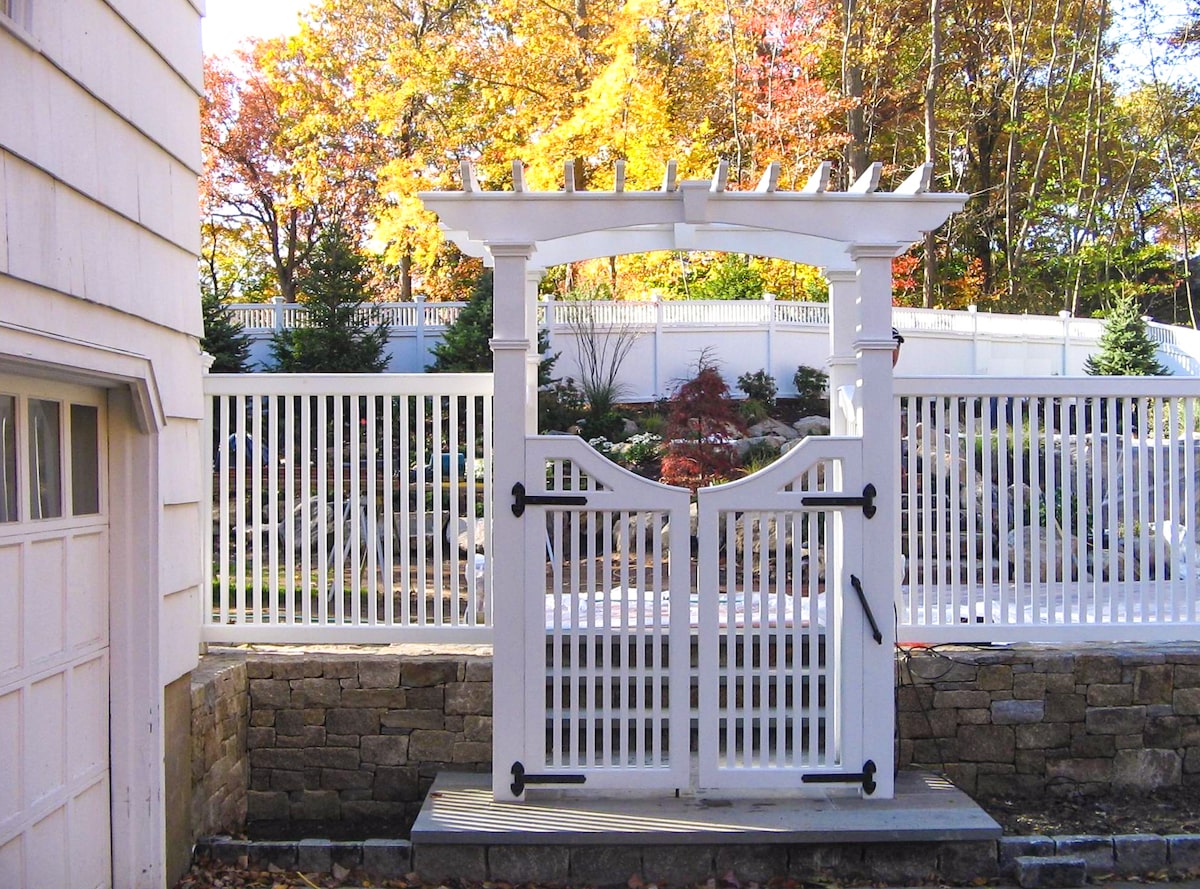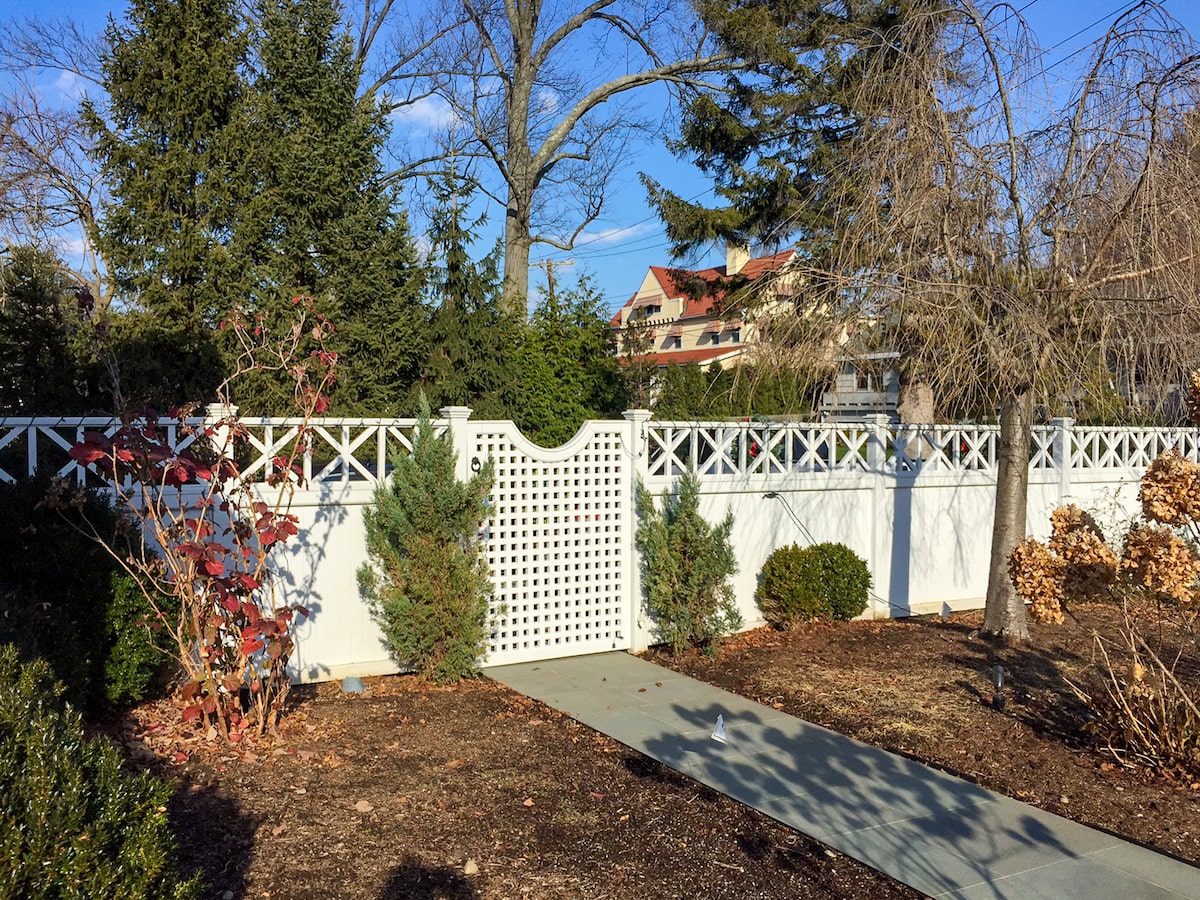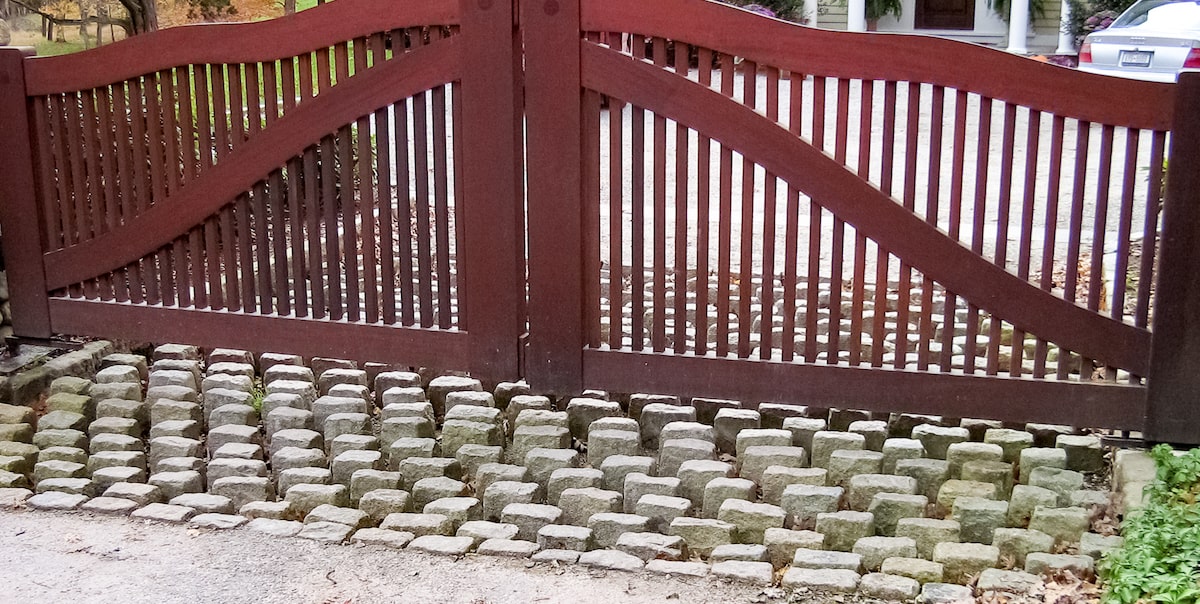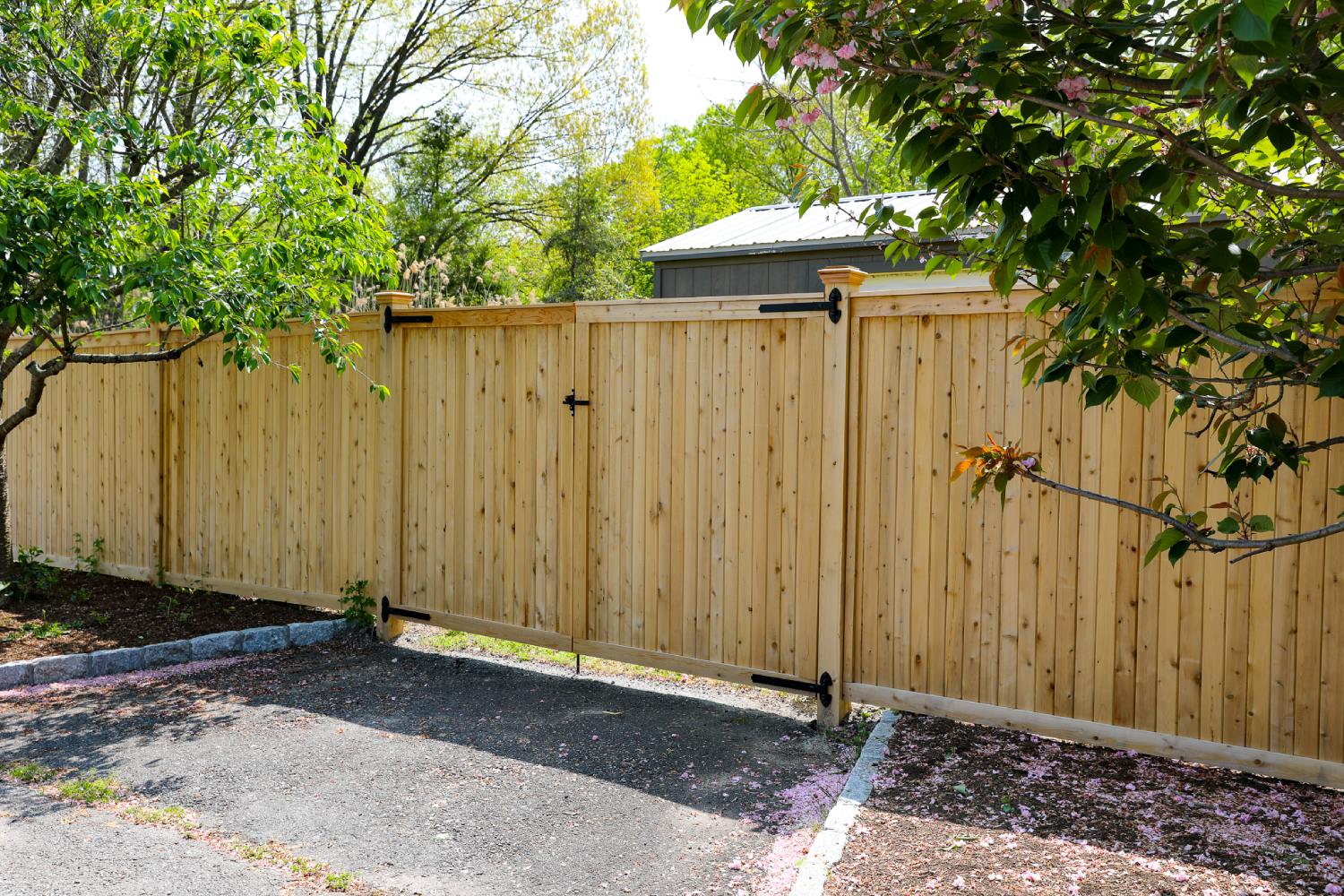An arbor can serve as a grand entrance to your yard or to a specific area within it, such as a lawn, a vegetable garden, a pool, or a flower bed. They’re used to mark the transition between different sections of your yard and garden and to create a sense of progression and discovery as you move about. Rising above their surroundings, they naturally draw the eye and invite guests to explore the space while guiding their movement through it.
Here are 10 ideas for how you can upgrade your yard with an arbor!
1. Defining transitional spaces
Even a very simple arbor, like the one pictured here, can heighten the aesthetics of an outdoor space and clarify its purpose. This arbor draws attention to the walk gate in the fence below, creating a doorway from the driveway to the little side yard leading to the back of the house. It adds an extra touch of formality to the movement from one area to the other and it lends a little more pleasant seclusion to the side yard.
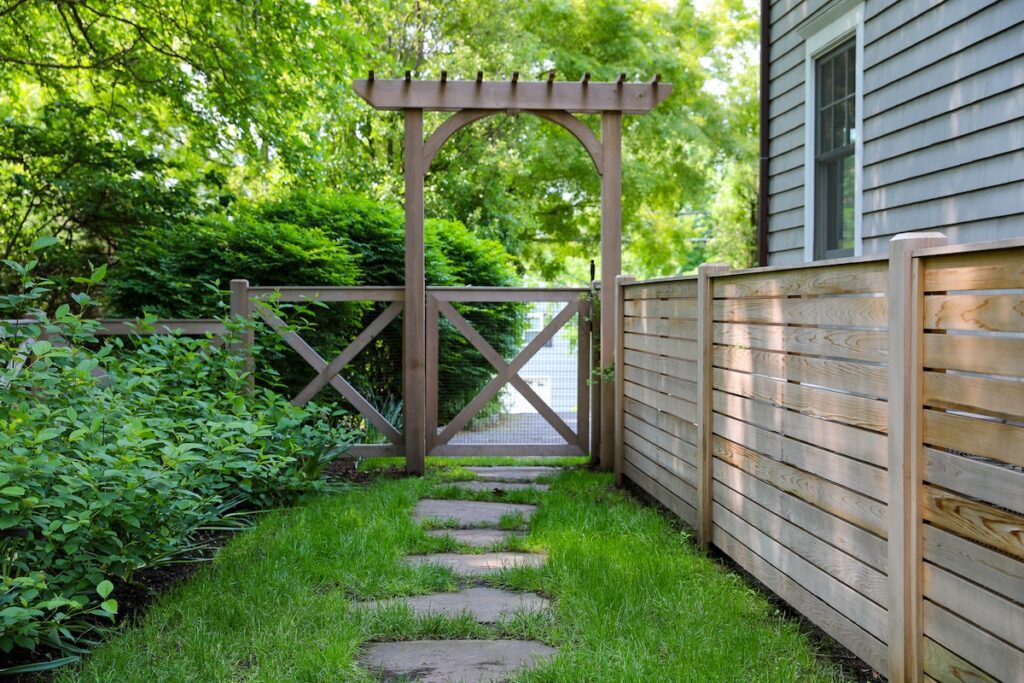
2. A window to the woods beyond
Arbors serve as focal points and entryways. The arched arbor and the scalloped lattice in the walk gate beneath define a circular space that looks out onto the woods behind the backyard almost like a window in a doorway. It naturally draws the eye as you look around the backyard and heightens the view for guests and visitors as they round the path behind the gate.
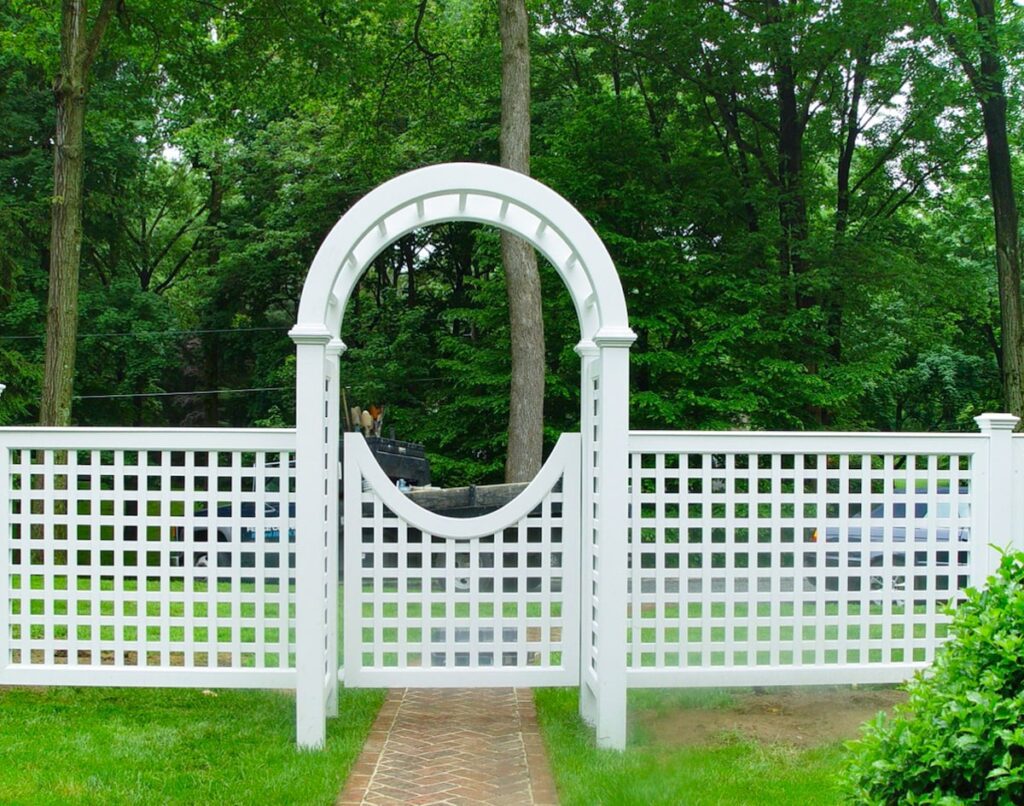
3. From the courtyard to the backyard
Similar to the first one we looked at but more ornate, this arbor also delineates the boundary between the side of the property and the backyard, though the low brick wall and the pavers below foot give the space the feeling of a courtyard. The vertical movement of the arbor’s columns complement the tall trees in the background.
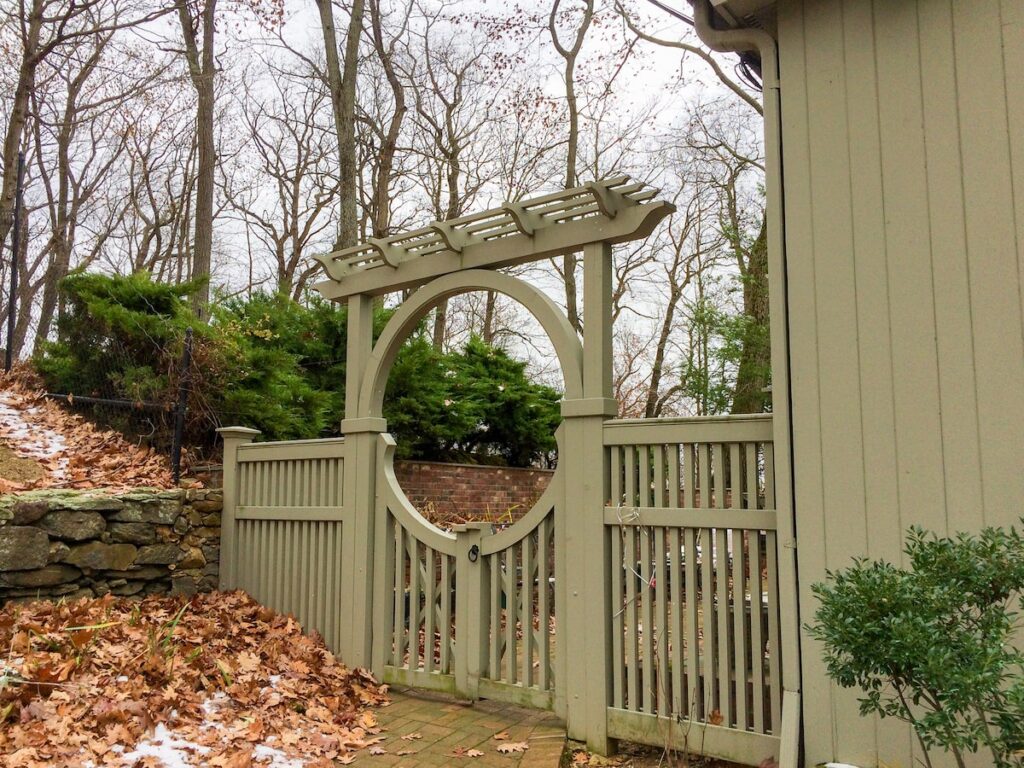
4. An idyllic spot beside the water
It would be tempting to say that this arbor is more purely decorative than the ones we’ve looked at so far: all of the other arbors have stood along paths, over entryways, and through fences, while this one stands on its own. But it doesn’t just enhance the peaceful ambiance of the pond and create a natural place to stop and take in the view. Even without a clearly defined path beneath it or a fence on either side to set a boundary, this arbor still directs your movement through the space. Anyone strolling through the property will naturally walk through the arbor on their way to the bench beside the water.
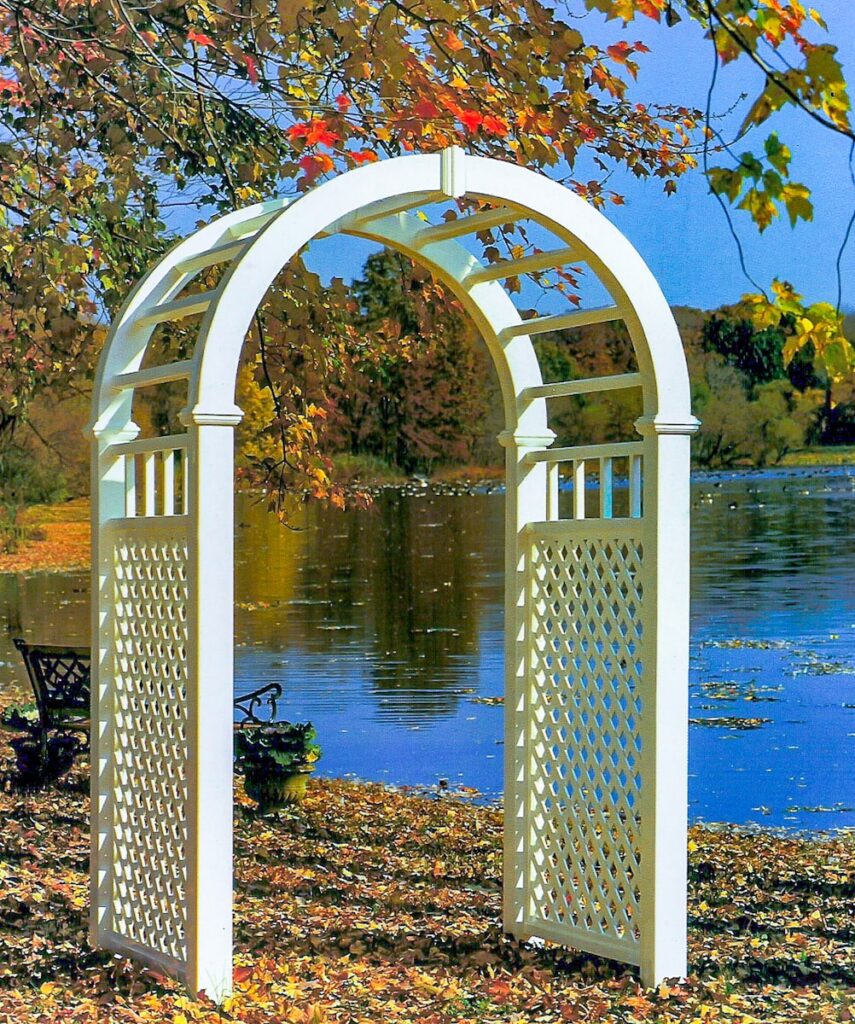
5. A grand entrance
Arbors are often entrances, and nowhere more so than here. The privacy fencing, the tall solid panels, the ornate woodwork offset with wrought iron hinges and a small lattice window – they all make this arbor feel more like a doorway to a home than a gateway through a fence. The latticed sidewalls and the trellised arch above allow the gate to extend out from the fence, almost creating the impression of a small outdoor vestibule as you pass through.
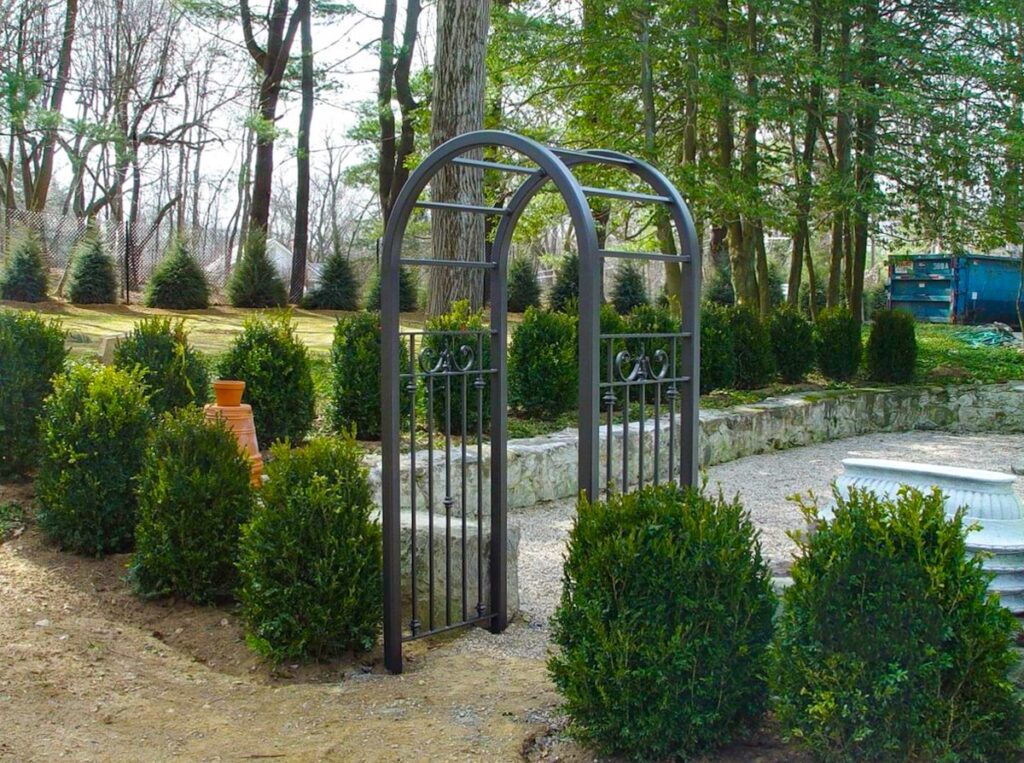
6. An iron arbor, covered in vines
Not all arbors are made of wood. This wrought iron arbor leads from one section of the backyard to another, helping to delineate the separate spaces and create an additional focal point for the landscaping. The trellis along the arbor’s top allows vines to climb along the archway, further incorporating the structure into the natural feel of the green space surrounding it.
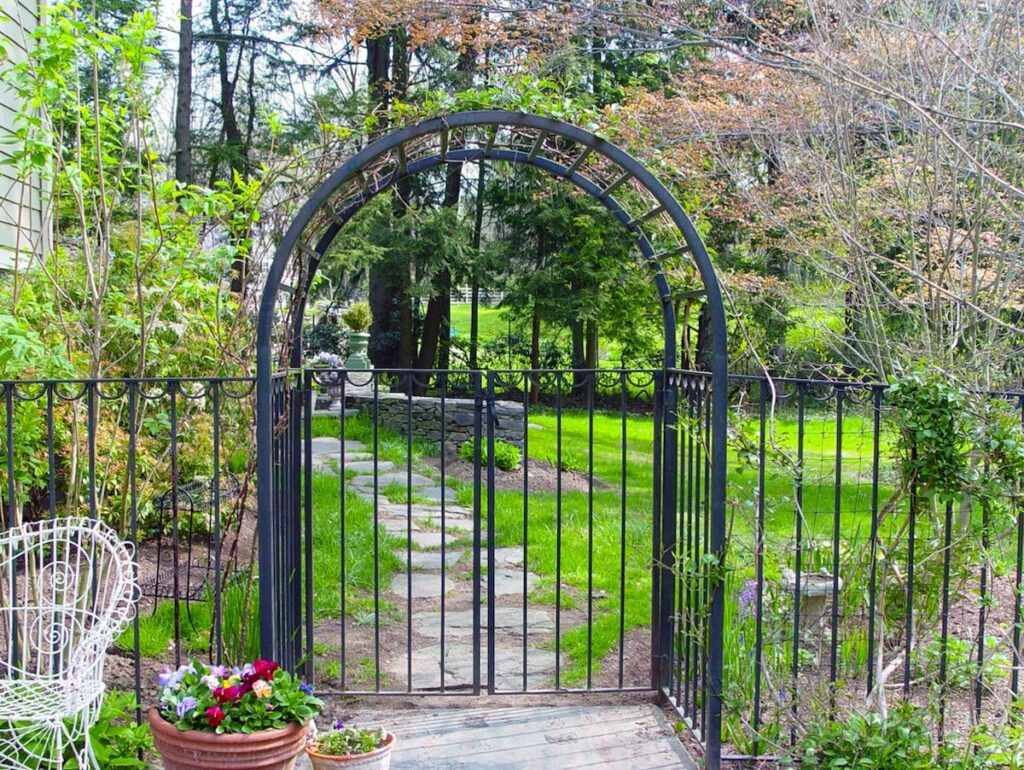
7. A garden gateway
Another wrought iron arbor, this one leads through a gate from the yard above to the landscaped garden path on the hillside below. The arbor’s white arch creates a focal point for visitors making their way through the property.
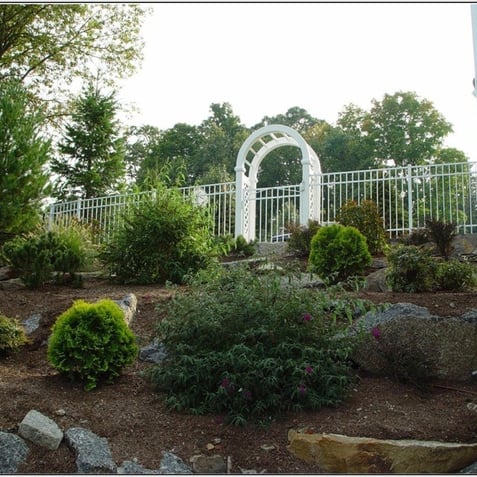
8. This way to the pool!
This charming arbor set amidst a white picket fence leads visitors from the backyard lawn to the pool on the other side. An arbor is a great way to help turn a pool fence from a zoning code requirement into a lovely piece of outdoor architecture that enhances the value of your home.
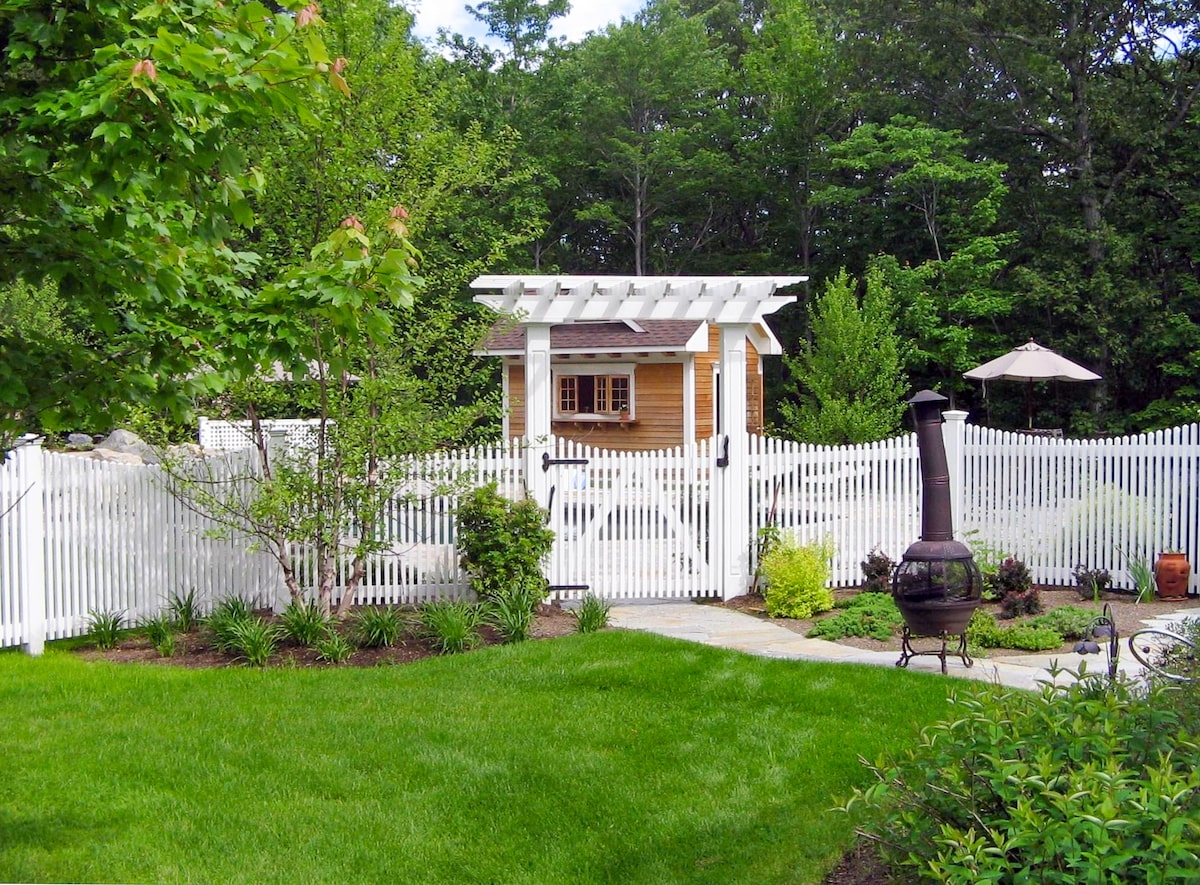
9. A rich, mahogany entryway
The rich, dark brown color of the wood in this mahogany fence and arbor entrance lends the structure a real note of sophistication. In this case, the arbor draws your attention to the stairs beyond it leading down to the home’s lower level.
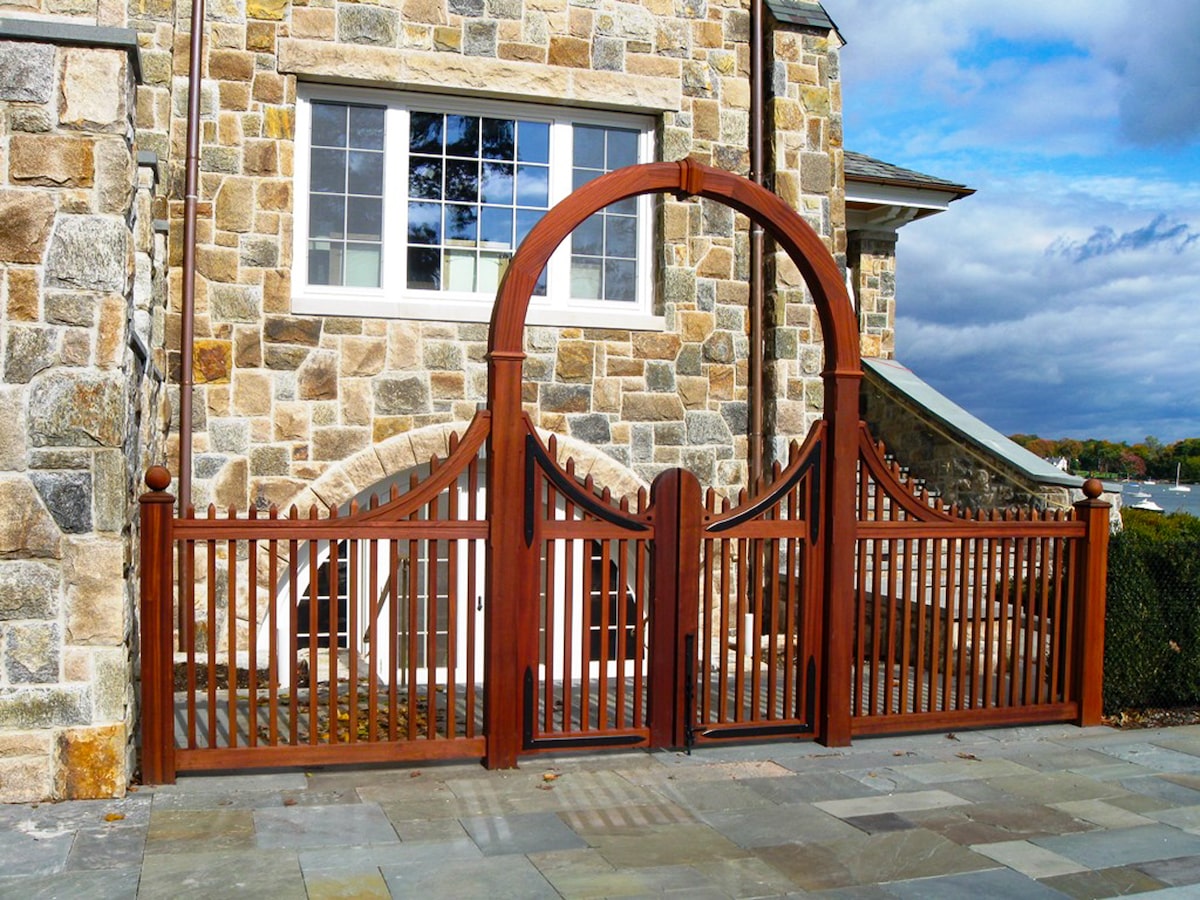
10. Passing under the arch
Rather than lead through a fence, this iron arbor marks the way through landscaped shrubbery to the gravel courtyard on the other side. The metal lends an extra note of old world sophistication to the property.

Garden Arbor FAQs
Here are answers to some commonly asked questions about arbors and other outdoor structures.
Where should an arbor be placed in a garden?
Arbors are designed to be entryways and focal points in a garden or yard. They can be placed above the gate in the middle of a wall or a fence, over a bench or seating area, along a garden path, or near a pond or a fountain. Typically an arbor should be placed somewhere where you want to direct visitors – either a place for them to walk through as they move about the property or a place to stop momentarily and take in the view.
What’s the difference between an arbor and a trellis?
Many arbors incorporate trellises, so it can sometimes be confusing to tell the two apart. An arbor is a freestanding structure that you can walk through. It typically consists of two vertical sides connected by an arch or a flat top and it usually serves as an entryway from one part of an outdoor space to another. A trellis, on the other hand, is typically a flat, latticed framework made of intersecting pieces of wood or metal designed to support the growth of vines and climbing plants. They can be freestanding or attached to a wall or fence.
What’s the difference between an arch and an arbor?
An arch is a curved structure that spans an opening and is primarily designed to be decorative. An arbor is a freestanding structure that is usually more substantial than an arch, often incorporating a trellis-like framework on its sides or on its top to support climbing plants. Arbors often include an arched top, though sometimes they have a flat trellised top instead.
Is a pergola an arbor?
While a pergola and an arbor might seem similar, they differ in their usual structure and purpose. A pergola is a larger, more open structure than an arbor, typically consisting of a framework of vertical posts or columns that support a series of beams and rafters. This framework can cover a wide area to create a shaded walkway, passageway, or sitting area. They’re primarily used to define and provide shade for an outdoor space such as a patio, a deck, or a garden path.
An arbor, on the other hand, is much smaller than a pergola and consists of a simple structure with two to four posts, typically 3-4 feet wide by 1-3 feet deep, supporting an arch or a flat trellis-like top. They’re usually used as gateways or focal points in gardens, providing a transition point from one outdoor space to another.
Let us help you design an incredible garden escape
Whether you’re looking for an arbor, a pergola, or a gazebo to upgrade your home and garden, the craftsmen at Garon Fence have decades of experience building outdoor structures of uncompromising quality. Contact us for an estimate or come by our factory showroom in Bedford Hills, NY to see what sets our work apart.

